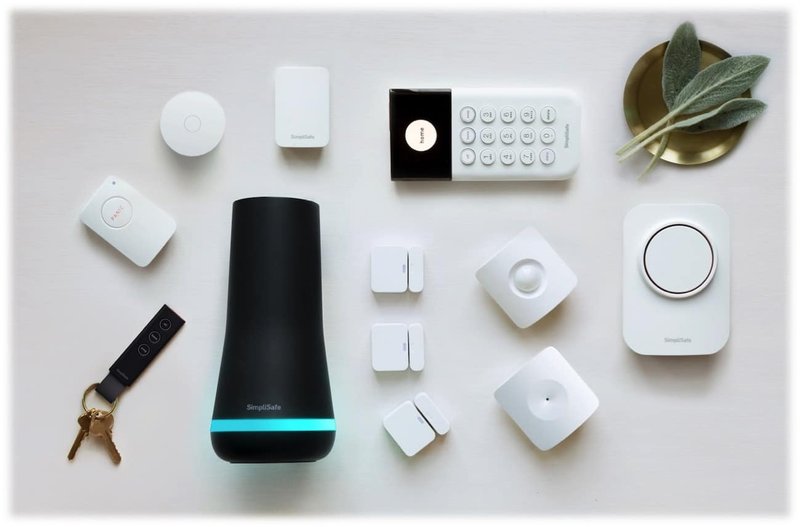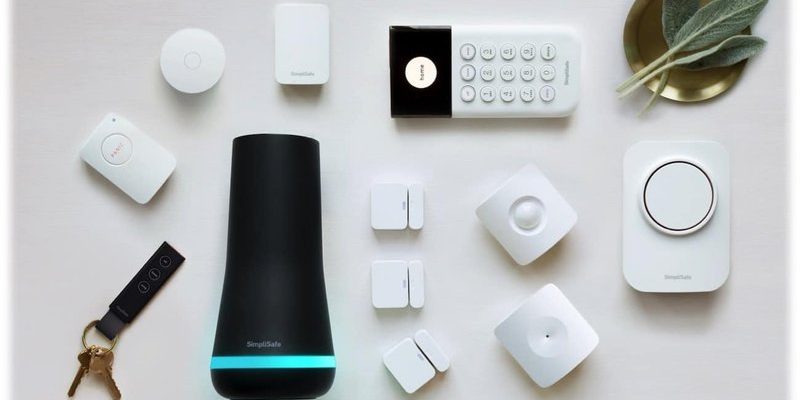
Think of a warranty like a safety net for your security gear. It’s a promise from the company that if something goes sideways—not because of anything you did, like dropping the remote in your soup, but because of a fault with the equipment—they’ll set it right. SimpliSafe is a well-known brand for DIY home security, famous for its easy install and no-contract approach. But even the smartest tech needs a little backup plan. Let’s break down exactly what their warranty covers, what it doesn’t, and how you can make the most of it.
Understanding the SimpliSafe Security Systems Warranty
Here’s the thing: not all warranties are created equal. SimpliSafe offers a warranty that’s fairly straightforward, but there are a few quirks you’ll want to know about. Their standard warranty covers defects in materials and workmanship for a certain period—typically one year from the original purchase date. That means if your keypad stops working for no apparent reason, or your motion sensor just won’t sync up, SimpliSafe will repair or replace it at no cost.
But—and this is important—the clock on that warranty starts ticking the moment you buy the system, not when you install it. So if the box sits in your closet for six months before you get around to setting things up, you’ll have less time under that safety net. Also, while the coverage is comprehensive for defects, it doesn’t cover things like accidental damage or issues caused by using non-approved accessories. For example, if you try to pair a universal remote instead of the official SimpliSafe one, that’s on you.
What SimpliSafe Warranty Actually Covers
Let me explain a bit more about what falls under SimpliSafe’s promise. When they talk about “defects in materials and workmanship,” they’re basically saying: if anything in your system fails because it wasn’t made right, they’ll handle it. This includes things like:
- Keypads that won’t turn on or respond due to internal faults, not battery issues.
- Sensors that never pair or constantly disconnect even after troubleshooting.
- Base stations that won’t sync, reset, or lose code repeatedly despite proper setup.
- Remotes that stop communicating with the system for reasons other than battery life or physical damage.
In these cases, SimpliSafe will usually send you a free replacement part. Sometimes, they might ask you to return the defective item or walk through a few reset or troubleshooting steps just to be sure it’s not something simple. They’re surprisingly helpful—I’ve seen people get a new sensor shipped overnight after a quick call.
What’s Not Covered By SimpliSafe’s Warranty?
You might be wondering: what can void this safety net? Like most companies, SimpliSafe draws the line at anything that’s your fault or just normal wear and tear. Here are some classic “not covered” scenarios:
- If your kid drops the keypad in the toilet—no dice, water damage isn’t covered.
- Sensor stops working after you swap in off-brand batteries or use a hacky code to try to reset it? That’s on you.
- Physical damage, like cracks, dents, or melted bits from leaving the remote on a stove. (It happens more than you’d think!)
- Any attempt to tinker with the device’s internal code, wiring, or software. If you’ve tried to “fix” or hack the hardware, the warranty is void.
Think of it this way: if it broke because the product itself failed, you’re covered. If it broke because of life, accidents, or your own tweaks, you’re not.
Extended Warranty: SimpliSafe’s Monitoring Plans Perk
Here’s a little inside tip: SimpliSafe’s regular warranty is good, but their monitoring service sweetens the deal. If you sign up and keep up with one of their professional monitoring plans, you’re upgraded to a lifetime warranty on your equipment for as long as you’re a paying subscriber. That means as long as they’re keeping watch over your home, your gear is always under warranty.
Why does this matter? Well, sensors, remotes, and base stations don’t last forever. Batteries run out. Sometimes, circuitry just wears down—especially in busy households or places with extreme temperatures. Knowing you’ve got equipment protection as long as you keep the monitoring active is a nice bonus. If you ever cancel your monitoring plan, though, the grace period ends and you’re back to the original warranty window.
How To Make a SimpliSafe Warranty Claim
Honestly, filing a warranty claim with SimpliSafe isn’t a nightmare—it’s actually pretty painless compared to some other tech companies. Here’s how it usually goes:
- First, hop onto their website or call their customer service team. They’re used to walking folks through troubleshooting steps right away.
- They might ask you to try resetting or syncing your device again, just to rule out a simple fix. If you’ve already done your own troubleshooting, mention that upfront.
- If your device is still busted and under warranty, they’ll usually arrange to send you a replacement. In some cases, you might need to ship the old one back, but they provide a prepaid label.
- When the new part arrives, just swap it in, sync it with your base station, and you’re back in business.
Be sure to have your purchase info on hand—like your order number or the email you used. If you bought your SimpliSafe system at a third-party retailer, you might need a copy of your receipt.
DIY Troubleshooting Before You Call SimpliSafe
Not every glitch means you need a warranty replacement. Sometimes, a quick reset or some basic troubleshooting saves you the hassle (and time). Here are a few things I recommend trying before you reach out:
- Check the batteries: Most sensor issues come down to dead or dying batteries. Swap in fresh ones before assuming it’s hardware failure.
- Reset or resync the device: Sometimes a simple reset (usually holding a button for 10–15 seconds) will bring a stubborn sensor or remote back to life.
- Test the range: Devices might lose connection if they’re too far from the base station or have too many walls in between.
- Double-check for interference: Other electronics or metal objects can interfere with the code your remote or sensor uses to communicate.
If you’ve ticked off all these boxes and your gear still won’t behave, then it’s probably time to get SimpliSafe on the line.
How SimpliSafe Warranty Compares To Other Security Systems
You might be comparing SimpliSafe to other big names—maybe ADT, Ring, or even a universal remote-style setup you piece together yourself. Most traditional home security brands require long contracts and often offer a basic one-year warranty. Some, like Ring, add coverage if you join their subscription plans, similar to SimpliSafe.
Where SimpliSafe stands out is that you don’t have to sign your life away just to get a good warranty. Plus, their lifetime warranty extension with monitoring is genuinely valuable, especially if you’re planning to keep the system for years.
If you’re thinking of going the “universal” route—mixing third-party sensors, off-brand remotes, or hacking together your own smart home setup—the warranty often becomes a big headache. Incompatibility, lack of support, and “use at your own risk” rules mean you’re mostly on your own for troubleshooting and repairs.
Honestly, there’s peace of mind in knowing the same brand you bought from will stand by their hardware—at least as long as you play by the rules.
Real-Life Example: When the Warranty Saved the Day
Let’s step into the shoes of someone actually using SimpliSafe. Picture this: a friend of mine set up her SimpliSafe system right out of the box. Everything worked perfectly for a few months. Then, all of a sudden, her entry sensor started acting up. No matter how many times she tried to resync or reset it, the sensor just wouldn’t talk to the base station.
She called customer service, ready for a fight—but instead, they walked her through a few troubleshooting steps to make sure it wasn’t a battery or pairing issue. Once it was clear it was a defect, they shipped her a new sensor the next day. Her security system was back to normal within two days, and she didn’t spend a dime.
That’s the power of knowing what your SimpliSafe warranty covers—and having a company that doesn’t make you jump through flaming hoops to get help.
Key Takeaways: Maximizing Your SimpliSafe Warranty
Here’s what I’d remember, if you’re just skimming or want the big picture:
- SimpliSafe’s warranty covers manufacturing defects and faulty equipment—not accidental damage, hacking, or modifications.
- Standard coverage lasts one year, but you get a lifetime warranty as long as you keep a monitoring plan active.
- Always try basic troubleshooting first—reset, resync, swap batteries—before claiming a warranty repair.
- If something really is broken, SimpliSafe’s support team is responsive and fair about replacements.
- The warranty starts from your purchase date, and only registered devices are eligible.
If you treat your SimpliSafe system gently and stick to official accessories, you’ll be in good hands. And if you ever do need to make a warranty claim, you won’t find yourself lost in a maze of fine print or automated phone menus.
Bottom line: SimpliSafe’s warranty is about trust—it’s their way of saying, “We’ve got you covered,” so you can get on with living your life, not worrying about your security gear.
